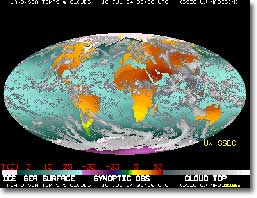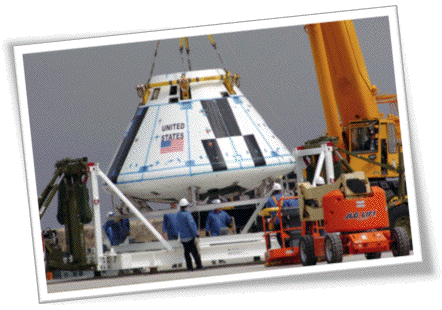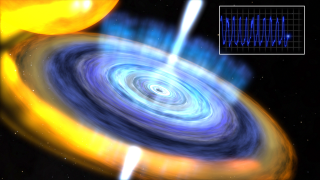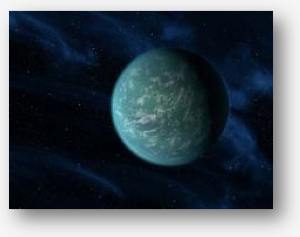
Statement by the President on NASA Day of Remembrance – January 26, 2012


 Find out from Environmental and Thermal Operating System, or ETHOS, operator Tess Caswell about the role of chemistry in making sure the astronauts aboard the space station have oxygen to breathe, water to drink, and a comfortable temperature in which to live and work. This NASA Now program is available on the NES Virtual Campus beginning Jan 25, 2012.
Find out from Environmental and Thermal Operating System, or ETHOS, operator Tess Caswell about the role of chemistry in making sure the astronauts aboard the space station have oxygen to breathe, water to drink, and a comfortable temperature in which to live and work. This NASA Now program is available on the NES Virtual Campus beginning Jan 25, 2012.
Link to the NES Virtual Campus home page.
Weather and Climate: Satellite Meteorology
 As part of a series of electronic professional development experiences, the NASA Explorer Schools project and the National Science Teachers Association are hosting a 90-minute professional development web seminar for educators on Jan. 23, 2012, at 6:30 p.m. EDT. Learn to use data from NASA’s Geostationary Operational Environmental Satellites, or GOES, and Polar Operational Environmental Satellites, or POES, in your meteorology lessons. This web seminar features “Monitoring the Global Environment,” one of eight modules within the Satellite Meteorology course. You will locate and download satellite data, then use these data to create graphs.
As part of a series of electronic professional development experiences, the NASA Explorer Schools project and the National Science Teachers Association are hosting a 90-minute professional development web seminar for educators on Jan. 23, 2012, at 6:30 p.m. EDT. Learn to use data from NASA’s Geostationary Operational Environmental Satellites, or GOES, and Polar Operational Environmental Satellites, or POES, in your meteorology lessons. This web seminar features “Monitoring the Global Environment,” one of eight modules within the Satellite Meteorology course. You will locate and download satellite data, then use these data to create graphs. Link to the NES Virtual Campus home page.
 A test version of NASA’s Orion spacecraft soon will make a cross-country journey, giving residents in three states the chance to see a full-scale test version of the vehicle that will take humans into deep space.
A test version of NASA’s Orion spacecraft soon will make a cross-country journey, giving residents in three states the chance to see a full-scale test version of the vehicle that will take humans into deep space.
Link to the NES Virtual Campus home page.
Winter seems to have been on hold this year in some parts of the United States. Snowfall has been scarce in places that were overwhelmed with the white stuff at the same time last year. In this ScienceCast, JPL climatologist Bill Patzert explains what’s going on.
Link to the NES Virtual Campus home page.
 Melody Shaw gave 700 fourth- and fifth-grade students an opportunity to put themselves in the shoes of NASA engineers. Shaw is a science lab teacher at Grenada Upper Elementary School in Grenada, Miss.
Melody Shaw gave 700 fourth- and fifth-grade students an opportunity to put themselves in the shoes of NASA engineers. Shaw is a science lab teacher at Grenada Upper Elementary School in Grenada, Miss.The NES Virtual Student Symposium provides the opportunity for up to two teams of two students to share the results of an investigation or NASA design challenge with NASA scientists, engineers, technicians and educators. Participation in the Virtual Student Symposium is a prerequisite for getting invited to the all-expenses-paid NES National Student Symposium to be held at a NASA field center on May 2-5, 2012. The investigation or design challenge may be conducted as a classroom activity or done by students on their own, based on their own interests. The investigation or design challenge must relate to a NASA Explorer Schools teaching module or NASA Now episode on the NASA Explorer Schools Virtual Campus.
 Dr. Richard Boitnott, lead test engineer at the Landing and Impact Research Facility at NASA’s Langley Research Center, has the kind of job almost any student would love — he gets to crash things and see what happens. In this program, Boitnott show you some of the crucial tests he conducts and explains how he uses technology to collect data.
Dr. Richard Boitnott, lead test engineer at the Landing and Impact Research Facility at NASA’s Langley Research Center, has the kind of job almost any student would love — he gets to crash things and see what happens. In this program, Boitnott show you some of the crucial tests he conducts and explains how he uses technology to collect data.
 An international team of astronomers has identified a candidate for the smallest-known black hole by using data from NASA’s Rossi X-ray Timing Explorer. The evidence comes from a specific type of X-ray pattern, nicknamed a “heartbeat” because of its resemblance to an electrocardiogram. The pattern until now has been recorded in only one other black hole system.
An international team of astronomers has identified a candidate for the smallest-known black hole by using data from NASA’s Rossi X-ray Timing Explorer. The evidence comes from a specific type of X-ray pattern, nicknamed a “heartbeat” because of its resemblance to an electrocardiogram. The pattern until now has been recorded in only one other black hole system.
Link to the NES Virtual Campus home page.
 NASA’s Kepler mission has confirmed its first planet in the “habitable zone,” the region where liquid water could exist on a planet’s surface. Kepler has discovered more than 1,000 new planet candidates, nearly doubling its previously known count. Ten of these candidates are near-Earth-size and orbit in the habitable zone of their host star. Candidates require follow-up observations to verify they are planets.
NASA’s Kepler mission has confirmed its first planet in the “habitable zone,” the region where liquid water could exist on a planet’s surface. Kepler has discovered more than 1,000 new planet candidates, nearly doubling its previously known count. Ten of these candidates are near-Earth-size and orbit in the habitable zone of their host star. Candidates require follow-up observations to verify they are planets.
Link to the NES Virtual Campus home page.